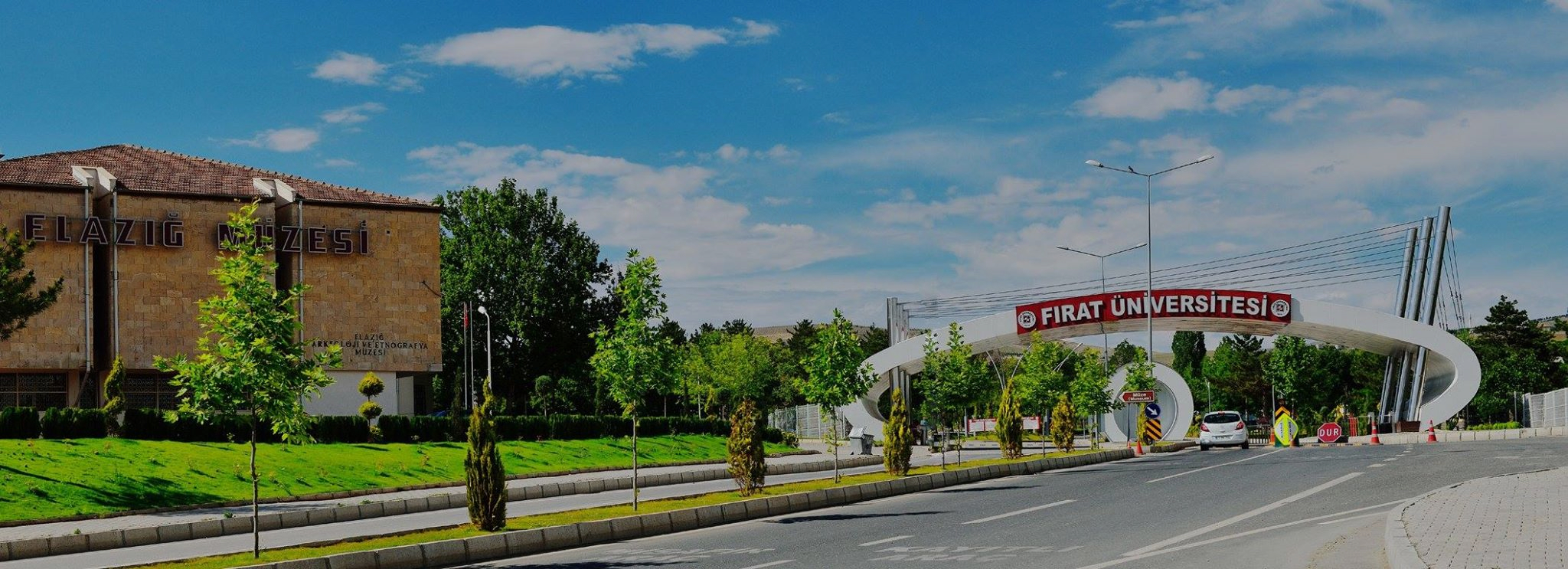
Publications
 Yalçın, S. Kaan, Doğan, Zühal (2024) Anadolu Türklüğünde Oyun ve Oyuncak Adları, Kesit Yayınları: İstanbul.
Yalçın, S. Kaan, Doğan, Zühal (2024) Anadolu Türklüğünde Oyun ve Oyuncak Adları, Kesit Yayınları: İstanbul.
Games and toys, as significant elements that interact with numerous disciplines such as history, folklore, geography, anthropology, linguistics, archaeology, philosophy, and education, provide a foundation for the multifaceted development of individuals and societies. The concepts of games and toys, which have found a place in every culture from different perspectives, hold great importance as they educate individuals, facilitate quality use of time, serve as a bridge between the past and the future to foster unity and solidarity, and reveal the cultural structures of societies. Therefore, the scientific examination of the nomenclature associated with games and toys will shed light on various historical and cultural phenomena.
The primary aim of this study is to identify how the names of games and toys shaped within the rich cultural world of the Turkish nation are reflected in Anatolian Turkish.
In this study, the names of all types of games, toys, and game-related concepts included in the Derleme Sözlüğü (Compilation Dictionary) have been classified according to their characteristics.
The study aims to comprehensively document the names of games and toys used in colloquial language, contribute to research on the nomenclature of games and toys in Turkey, and enrich our cultural heritage

Yalçın, S. Kaan, Karabulut, Büşra (2024) Anadolu Türklüğünde Giyim Kuşam Adları, Kesit Yayınları: İstanbul.
Linguistics is a broad scientific field that investigates the internal and external structures of language, examines interrelations among languages, and maintains inseparable connections with many other disciplines. One of the significant subfields of linguistics is onomastics. This field, which addresses the naming of entities in the external world and the systematics of such nomenclature, encompasses various subcategories such as place names, hydronyms, animal names, character names, plant names, and more. Among these, the nomenclature of clothing, which pertains to one of humanity’s fundamental needs, constitutes a noteworthy area of study.
Initially, clothing names addressed basic human needs such as dressing and protection. Over time, they came to embody attributes of adornment, attire specific to special occasions and circumstances, and were enriched with accessories, gaining a distinct characteristic. Moreover, the styles of clothing associated with particular periods often evolved into fashion trends, acquiring a unique identity.
This study examines and classifies, based on their characteristics, the names of various clothing items and accessories found in the Derleme Sözlüğü (Compilation Dictionary). It aims to document in detail the names of clothing used in colloquial language, contribute to studies on clothing nomenclature in Turkey, and enrich our cultural heritage.
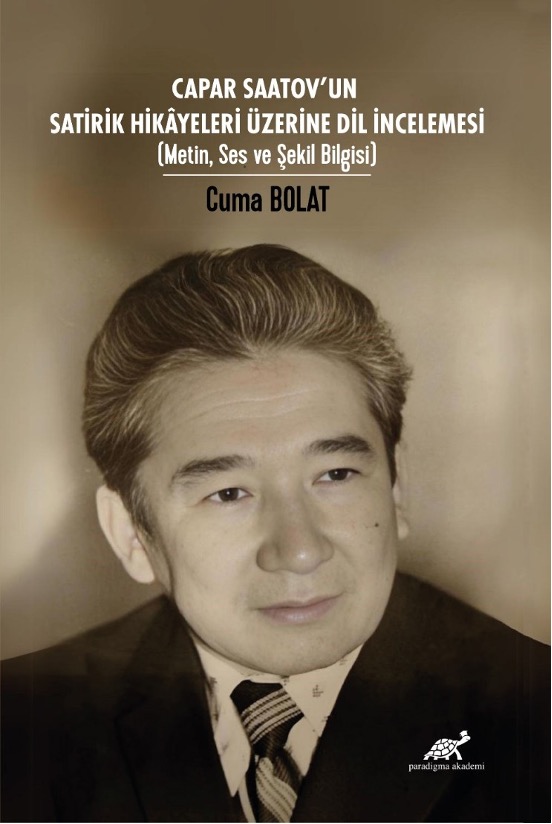
Bolat, Cuma (2024) Capar Saatov'un Satirik Hikayeleri Üzerine Dil İncelemesi (Metin, Ses ve Şekil Bilgisi), Paradigma Akademi Yayınları: Çanakkale.
The study consists of the sections “Introduction, Language Analysis, Conclusion and Appendixes”. In the “Introduction” section, information is given about the Kyrgyz Turkish language, Kyrgyz literature, and the life and works of Capar Saatov, who made significant contributions to Kyrgyz literature with his works.
In order to create the headings in the “Language Analysis” section, Hülya Kasapoğlu Çengel’s work called Kyrgyz Turkish Grammar (Sound and Morphology) was used. The language analysis of the stories was handled under the main headings of phonetics and morphology. The main heading of phonetics was examined under the subheadings of “vowels, consonants, sound characteristics and events”; the main heading of morphology was examined under the subheadings of “simple word, derived word, derivational suffixes, noun, adjective, pronoun, adverb, verb, conjunction, preposition, exclamation”.
In the “Results” section, the findings and evaluations obtained in the study are given. In the “Appendix” section, the transcription texts of the stories and the transfers of the stories to Turkey Turkish are given.
The main purpose of the study was to introduce Capar Saatov, who has an important place in modern Kyrgyz literature but whose works have not been studied much in Turkey to date, to introduce his stories translated into Turkish to his readers and to identify the linguistic features of these stories.

Karaca, Veysel İbrahim (2023) Çağdaş Türk Lehçelerinde Ünsüzler, Kesit Yayınları: İstanbul.
Conducted with the aim of elucidating phonological changes and developments in consonants across contemporary Turkish dialects, this study focuses on the consonantal inventory and observed sound changes in modern Turkish dialects. Employing both synchronic and diachronic grammatical methods, the research compares the consonants in contemporary Turkish dialects with those from the Old Turkic periods including Göktürk, Uygur, and Karahanlı Turkic, aiming to identify consonantal appearances in initial, medial, and final positions.
The comparative analysis of consonantal appearances, sound properties, and phonetic changes across contemporary Turkish dialects explores the proximity between dialects and dialectal groups, as well as their phonological connections and differences.
 Bolat, Cuma (2023) Capar Saatov'un 'Ak Dil' İsimli Eseri Üzerine İnceleme (Metin, Dil, Üslup), Paradigma Akademi Yayınları: Çanakkale.
Bolat, Cuma (2023) Capar Saatov'un 'Ak Dil' İsimli Eseri Üzerine İnceleme (Metin, Dil, Üslup), Paradigma Akademi Yayınları: Çanakkale.
In this study, a language and style study was conducted on the work of Capar Saatov, one of the important figures of modern Kyrgyz literature, but whose works have not been studied in Turkey to date. The 10 stories in the work were transcribed from the Kyrgyz Cyrillic Alphabet to the Turkish Latin Alphabet and translated into Turkish. The stories were examined in terms of language and style using the document analysis method and their content was analyzed. The main purpose of the study was to reveal the author's language and style, the characteristics that distinguish his work, the savings he made while using the language, the way his world of thought and imagination is reflected in his work, and other elements related to language in his work. The study consists of the sections "Introduction, Language Analysis, Style Analysis, Conclusion and Appendixes".
In this study, it was aimed to make Saatov known in Turkey by translating and examining the stories into Turkish and to increase interest in Kyrgyz culture and language through his stories. It is also aimed for the study to serve as an example for future language and style studies.

Alkaya, Ercan, (2022) Kuzey Grubu Türk lehçelerinde Edatlar, Türk Dil Kurumu Yayınları: Ankara
As one of the three historical dialects of the Turkic languages, Kipchak Turkic continues to exist today through its contemporary representatives: Tatar, Kazakh, Kyrgyz, Bashkir, Karakalpak, Kumyk, Nogay, Karachay-Balkar, Crimean Tatar, and Karay Turkic. This study, entitled "Postpositions in the Northern Turkic Dialects," examines the postpositions used in these Kipchak group Turkic dialects.
Although the Northern (Kipchak) Turkic dialects, which are spread over a vast area, have not been the subject of many studies in Turkey, in recent years, changing circumstances have led to the development of doctoral and master's theses, especially at the academic level, on these dialects. These studies have largely focused on the general grammar of the dialect(s) in question. In addition, specific topics related to the dialects (such as adjectives, verbs, nouns, participles, compound verbs, adverbs, etc.) have begun to be addressed.
In this study, postpositions have been examined in all their aspects, primarily based on texts belonging to the Northern group of Turkic dialects. In this synchronous study, each postposition examined has been analyzed with its variants in ten dialects (if identified), and its structure, meaning, and function have been examined from time to time. A study of the etymological origin of the postposition has also been conducted. Based on the examples selected from the texts filed from approximately ninety works, and with a total of 221 postpositions identified, we believe that this study is capable of revealing the postpositions of the Northern group of Turkic dialects in a general sense.

Alkaya Ercan, Jamanazarov Umurzoq, Jamanarova Guljahon, (2022) Türk Halkları Edebiyatı, Kesit Yayınları: İstanbul
This study examines the literatures of Turkic peoples, particularly those of Uzbeks, Kazakhs, Kyrgyz, Karakalpaks, Turkmens, Azerbaijanis, Tatars, Bashkirs, Chuvashes, Dagestanis, Ottomans, Turks, Uyghurs, and other North Caucasian Turkic groups. Additionally, it provides information on Nobel laureates in world literature, including novelists, poets, and playwrights.
The work is prepared for undergraduate, graduate, and doctoral students, researchers at the faculties of philology in higher education institutions, and a wide readership interested in the literatures of Turkic peoples.
The work is written in the Uzbek Cyrillic alphabet.
 Alkaya, Ercan, (2021) Sibirya Tatar Türkçesi, Kesit Yayınları: İstanbul
Alkaya, Ercan, (2021) Sibirya Tatar Türkçesi, Kesit Yayınları: İstanbul
The study is divided into four main sections: phonology, morphology, and texts. The introductory section first evaluates the views on the name Sibir/Siberia. It then provides information on the history and ethnic formation of Siberian Tatar Turks, the position of Siberian Tatar Turkish within Turkic dialects, the geographical distribution and subgroups of Siberian Tatar Turks, their population, and religion. Finally, the most important studies conducted on Siberian Tatar Turkish so far are evaluated.
In the phonology section, the phonological features of Siberian Tatar Turkish are presented based on Old Turkic, and comparisons are made with Tatar literary language, other Turkic dialects, and historical Turkic dialects (especially Kipchak Turkish). The morphology section deals with word formation, word classes, and the declension of nouns and verbs.
The texts section includes 90 texts from the dialects of the Tobol-Irtysh (Tyumen-Omsk), Baraba (Novosibirsk), and Tom (Tomsk) regions, which constitute the dialects of Siberian Tatar Turkish. Considering that Siberian Tatar dialects, as a branch of Tatar Turkish, do not differ significantly from either the Tatar literary language or other Tatar dialects, they are examined as a whole, emphasizing their unifying features rather than their differentiating ones. However, both the general characteristics of all dialects and some specific situations within them are revealed.
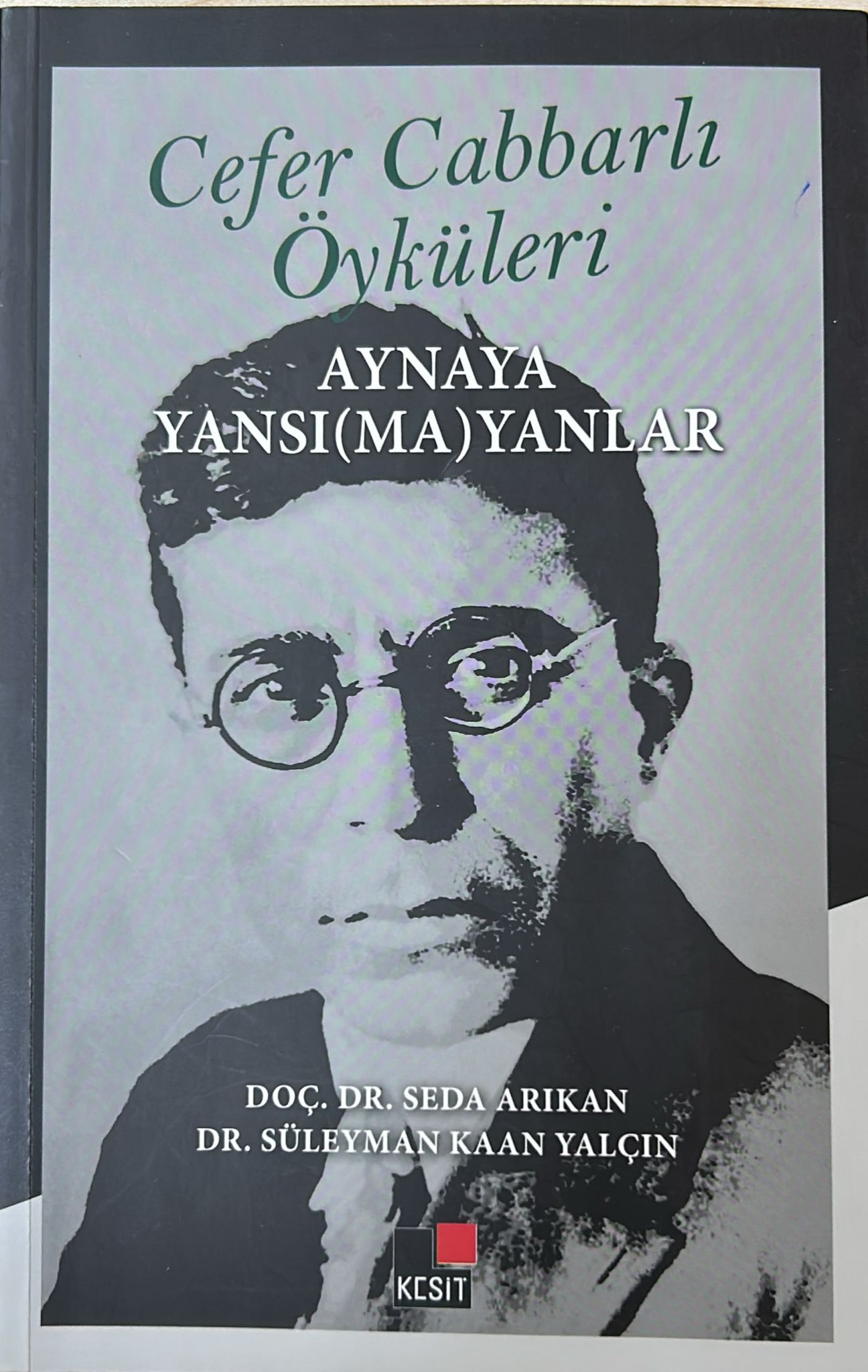 Arıkan, Seda, Yalçın, Süleyman Kaan (2019), Cefer Cabbarlı Öyküleri Aynaya Yansı(ma)yanlar, Manas Yayınları: Elazığ.
Arıkan, Seda, Yalçın, Süleyman Kaan (2019), Cefer Cabbarlı Öyküleri Aynaya Yansı(ma)yanlar, Manas Yayınları: Elazığ.
This work, authored by Assoc. Prof. Seda Arıkan and Dr. Süleyman Kaan YALÇIN, fundamentally aims to demonstrate that black in Cabbarlı's stories is not merely black. Cefer Cabbarlı, who began his literary career by writing works to defend Azerbaijan’s national and cultural identity, underwent transformations during his lifetime. When evaluated within the context of the era's circumstances, these transformations should not be regarded as a defeat but rather as a continuation of the struggle from where it was left off.
Furthermore, a meticulous examination of the changes and revisions seemingly imposed on Cabbarlı’s works reveals that the underlying meanings of these new orientations confirm the persistence of his resistance and defiance within his creations. Ignoring this resistance would equate to disregarding the hand Cabbarlı extended to us a century ago

Çetindağ Süme, Gülda, (2019). Alıp Manaş'ın Sembolik Serüveni, Kesit Yayınları, İstanbul.
The epic poems, in which the national and spiritual essence deeply penetrates, and where the mythological and historical periods intertwine, reflect the consciousness of the nation through folk products. These epics are a reflection of an ancient past and a rooted culture. To correctly interpret these cultural elements and to analyze the symbolic and mythological components within the epics, one must decode the symbolic codes. Only by resolving these symbolic codes can the true essence of the text emerge.
One of the most widespread epics of the Turkish world, the Alıp Manaş Epic, is imbued with national consciousness through its symbolic and mythological layers and represents a collective spirit. This epic, with its rich motifs from the Altai epic tradition, is characterized by a narrative that intricately weaves the cultural values of the Turkish nation into symbols.
The idealized hero of the Turkish nation, Alıp Manaş, learns to embrace national and spiritual values and completes his existential journey. His symbolic journey, which reflects real life, shows how he is renewed in this journey and progresses from 'I' to 'we'."
 Alkaya, Ercan, (2021) Sibirya Tatar Türkçesi, Kesit Yayınları: İstanbul
Alkaya, Ercan, (2021) Sibirya Tatar Türkçesi, Kesit Yayınları: İstanbul
The study is divided into four main sections: introduction, phonology, morphology, and texts. The introductory section first evaluates the views on the name Mishär. It then provides information on the history and ethnic formation of Mishär Tatar Turks, the position of Mishär Tatar Turkish within Turkic dialects, the geographical distribution and subgroups of Mishär Tatar Turks, their population, and religion. In the phonology section, the phonological features of Mishär Tatar Turkish are presented based on Old Turkic, and comparisons are made with Tatar literary language, other Turkic dialects, and historical Turkic dialects (especially Kipchak Turkish). The morphology section deals with word formation, word classes, and the declension of nouns and verbs. The texts section includes 144 texts from 21 dialectal regions of Mishär Tatar Turkish. These texts generally reflect the lives, historical past, customs and traditions, and various rituals such as birth, marriage proposals, weddings, death, and sacrifices of Mishär Tatar Turks.
This study is the first and most comprehensive study conducted in our country on Mishär Tatar dialects. Considering that Mishär Tatar dialects, as a branch of Tatar Turkish, do not differ significantly from either the Tatar literary language or other Tatar dialects, they are examined as a whole, emphasizing their unifying features rather than their differentiating ones. However, both the general characteristics of all dialects and some specific situations within them are revealed.

Yalçın, S. Kaan, (2018) Azerbaycan Türkçesi Grameri, Kesit Yayınları: İstanbul.
This study, focusing on Azerbaijani Turkish, which represents the eastern branch of the Oghuz group and plays a crucial role in shaping the identity of Oghuz Turkish, differs from other grammatical works on Azerbaijani Turkish conducted in Turkey. Unlike previous studies, it provides a detailed analysis of phonology and morphology, supported by examples drawn from original sources and, in some cases, comparisons with historical periods. In addition to the phonological and morphological features of Azerbaijani Turkish, the work offers comprehensive information on the etymology of the name 'Azerbaijan,' the history of Azerbaijani Turks, and the position of Azerbaijani Turkish within the framework of Turkic literary languages. Given that most grammatical studies on Azerbaijani Turkish in Turkey reflect general aspects of the language or serve as textbooks, this study is expected to fill a significant gap in the field and serve as a guide for new researchers interested in pursuing further studies in this area.

Stamov, Asanbek (2018), Akın, Sonçağ Yayınları: Ankara (Çev. Cuma BOLAT)
Akın is one of the important works that Asanbek Stamov, one of the prominent writers of modern Kyrgyz literature, brought to Kyrgyz literature. The work consists of four long stories. The stories emphasize historical events and the lessons to be learned from these events with an educational approach. The particularly striking element here is the author's observations and the emphasis on how the deterioration in the values, traditions and customs of the Kyrgyz people caused social problems. According to the author, the Kyrgyz people have moved away from some values and behaviors in their past, and this has caused damage to both the religious and sociological structure of the Kyrgyz people. For this reason, the understanding of giving advice is dominant in the stories. In addition to these, religious elements are also widely included in the stories, as in the story of Just Yusuf.
This work, translated from Kyrgyz Turkish to Turkish, is presented to the attention of those interested in Kyrgyz literature in Turkey.

Buran, Ahmet & Alkaya, Ercan (2017). Çağdaş Türk Lehçeleri. Ankara: Akçağ Yayınları.
This study examines seven contemporary Turkic dialects representing the three historical Turkic dialects: Oghuz, Kipchak, and Chagatai. Azerbaijan Turkish and Turkmen Turkish are representatives of the Oghuz group; Uzbek and Uyghur Turkish are representatives of the Chagatai (Karluk) group; and Tatar, Kyrgyz, and Kazakh Turkish are contemporary representatives of the Kipchak group.
The study is divided into three main parts. The first part, titled "Introduction to Turkology," provides general information about Turkology and briefly introduces contemporary Turkic dialects and the Turkic world. The second part, titled "Grammar of Contemporary Turkic Dialects," examines the grammar, phonetics, and morphology of the seven dialects. Before discussing the grammar of each dialect, the study provides information about the people who speak the dialect, their history, language, literature, and country. The end of this part includes a list of references. The third part, titled "Alphabets and Text Samples," presents the alphabets and text samples of the seven dialects studied in this work, along with the common Turkic alphabet.
This work is used as a textbook in Turkish Language and Literature and Contemporary Turkic Dialects and Literatures departments at many universities.
 Buran, Ahmet, Alkaya, Ercan, Yalçın, Süleyman Kaan (2014), Çağdaş Türk Yazı Dilleri 1 Güneybatı/Oğuz Grubu, Akçağ Yayınları: Ankara.
Buran, Ahmet, Alkaya, Ercan, Yalçın, Süleyman Kaan (2014), Çağdaş Türk Yazı Dilleri 1 Güneybatı/Oğuz Grubu, Akçağ Yayınları: Ankara.
This work examines the contemporary written languages of the Turkic languages within the Turkish group, excluding Chuvash, Yakut, and Khalaj. Although each of the four subgroups within the Turkish branch is covered in a separate volume, these four books are, in essence, a continuation of one another. This particular volume focuses on the Southwest/Oghuz group of Turkic written languages, encompassing Turkish (Türkiye Türkçesi), Azerbaijani, Turkmen, and Gagauz.
The book begins by providing information about the Oghuz people, Oghuz Turkish, and the place of Oghuz Turkish among Turkic states. Additionally, a dialect classification chart and a list of references are included to support the content.

Buran, Ahmet, Alkaya, Ercan (2014), Çağdaş Türk Yazı Dilleri-2 Güneydoğu/Karluk Grubu, Akçağ Yayınları: Ankara.
This work examines the contemporary written languages of the Turkic languages within the Turkish group, excluding Chuvash, Yakut, and Khalaj. While each of the four subgroups within the Turkish branch is presented in a separate volume, these four books are essentially a continuation of one another.
This particular volume focuses on the Southeast Karluk group of Turkic written languages, specifically Uzbek and New Uighur. The book begins by providing information about the Karluks, Karluk Turkish, and the position of Karluk Turkish among Turkic dialects. Additionally, a dialect classification chart and a list of references are included to support the content.

Buran, Ahmet, Alkaya, Ercan (2014), Çağdaş Türk Yazı Dilleri-3 Kuzeybatı/Kıpçak Grubu, Akçağ Yayınları: Ankara.
This work examines the contemporary written languages of the Turkic languages within the Turkish group, excluding Chuvash, Yakut, and Khalaj. While each of the four subgroups within the Turkish branch is addressed in a separate volume, these four books collectively serve as a continuation of one another.
This particular volume focuses on the Northwestern/Kipchak group of Turkic written languages, including Tatar, Kazakh, Kyrgyz, Bashkir, Nogai, Crimean Tatar, Karakalpak, Kumyk, and Karachay-Balkar. The book begins with an overview of the Kipchaks, Kipchak Turkish, and the place of Kipchak Turkish among Turkic dialects. Additionally, a dialect classification chart and a list of references are provided to support the content.
 Buran, Alkaya, Alkaya, Ercan, Özeren, Mehmet (2014), Çağdaş Türk Yazı Dilleri-4 Kuzeydoğu Grubu, Akçağ Yayınları: Ankara.
Buran, Alkaya, Alkaya, Ercan, Özeren, Mehmet (2014), Çağdaş Türk Yazı Dilleri-4 Kuzeydoğu Grubu, Akçağ Yayınları: Ankara.
This work examines the contemporary written languages of the Turkic languages within the Turkish group, excluding Chuvash, Yakut, and Khalaj. While each of the four subgroups within the Turkish branch is presented in a separate volume, these four books collectively form a continuation of one another.
This particular volume focuses on the Northeastern group of Turkic written languages, including Altai, Khakas, and Tuvan. The book begins by providing information about the Northeastern Turkic peoples, the Northeastern group of Turkic languages, and the position of Northeastern Turkic among Turkic dialects. Additionally, a dialect classification chart and a list of references are included to support the content.
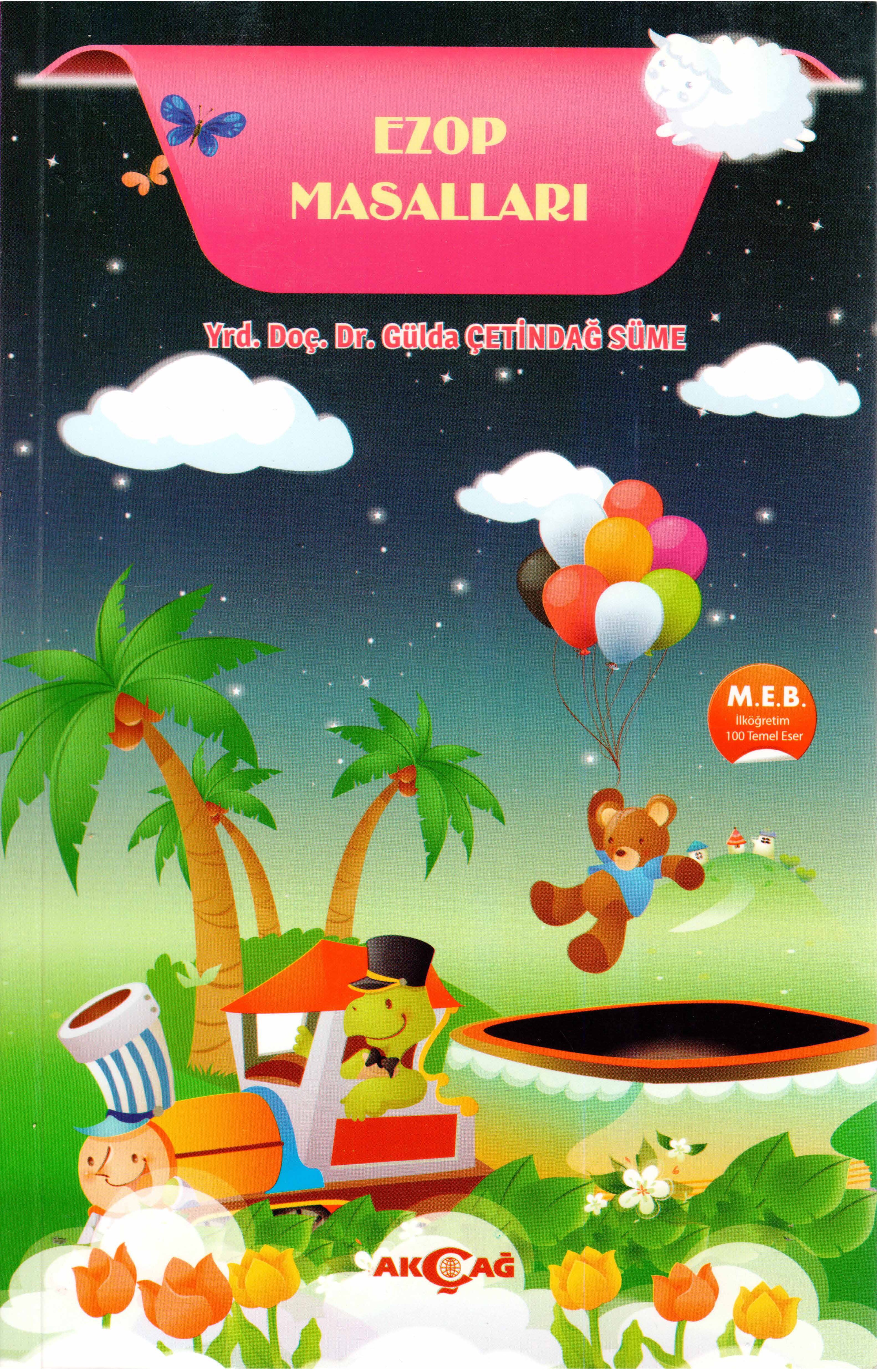 Çetindağ Süme, Gülda, (2013). Masal Diyarına Yolculuk-Ezop Masalları, Akçağ Yayınları, Ankara.
Çetindağ Süme, Gülda, (2013). Masal Diyarına Yolculuk-Ezop Masalları, Akçağ Yayınları, Ankara.
Masallar, geçmiş hal ve gelecek arasındaki bağlantıyı kendi yöntemiyle yeniden kurabilen bir özelliğe sahiptir. İnsan ile onu ilgilendiren olay ve olgular çerçevesinde yeni bir dünya kurarak o dünyanın kapılarını bizlere açabilen bir güçtedir. Zaman ve mekânları aşan yönüyle masallar, bir ders vermeyi hedefler. Masalın amacı sadece güzel vakit geçirmek, eğlendirmek, uyutmak değildir. Masalın asıl amacı; uyandırmaktır. Bu sebeple masallar yediden yetmişe her kesimin ders çıkaracağı bir türdür. Ezop masalları, kendi kurgusal dünyasında insanları ve onların davranışlarını esas alarak hayvanların şahsında verilen iletilerden ibarettir. Olanı ve olması gerekeni en güzel dille anlatan masalların her yaştan insana hitap etmesi onu daha önemli hale getirmektedir.

Kengerli-Eliyeva, Gülşen (2013), Azerbaycan Fuzûlî Araştırmacılığı, Manas Yayıncılık: Elazığ (Akt. Süleyman Kaan Yalçın)
This book, authored by Gülşen Eliyeva Kengerli in Azerbaijani Turkish and translated into Turkish by Dr. Süleyman Kaan YALÇIN, focuses on Fuzûlî, one of the most extensively studied poets of the Divan tradition. Fuzûlî elevated the poetic tradition established by Ali Şir Nevaî, Nizami Ganjavi, and Nesîmî to its peak, showcasing the Turkish language in all its refinement and contributing significantly to the formation of our linguistic, cultural, and literary heritage.
Titled Azerbaycan Fuzûlî Araştırmacılığı (Azerbaijani Fuzûlî Studies), this work examines Fuzûlî's artistry, intellectual world, poetics, and the most controversial opinions about him. It not only addresses Fuzûlî studies in Azerbaijan but also provides a comparative analysis of research conducted in Europe, Russia, and Turkey.
The most compelling aspect of this work lies in its analyses that seek to resolve the long-debated question of whether the concept of love in Fuzûlî’s poetry is divine or earthly. By shedding light on this contentious issue, the book elucidates Fuzûlî’s identity as a mystic poet who extolled divine love. In doing so, it serves as a guiding resource for both Fuzûlî studies and future research in this field.
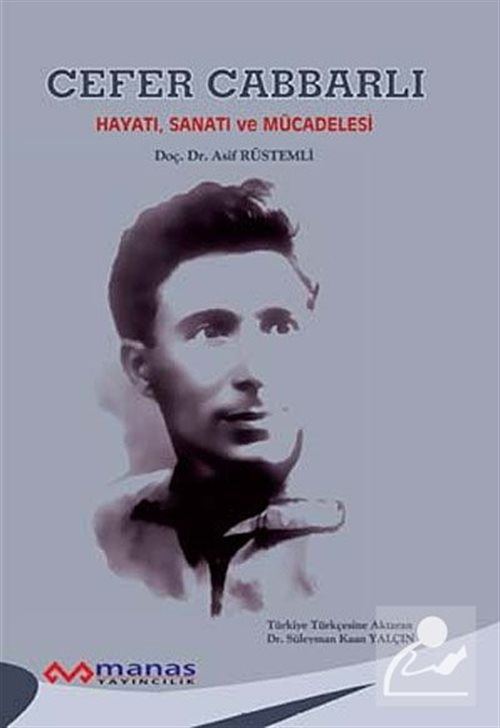 Rüstemli, Asif (2011), Cefer Cabbarlı Hayatı, Sanatı ve Mücadelesi, Manas Yayıncılık: Elazığ. (Süleyman Kaan Yalçın)
Rüstemli, Asif (2011), Cefer Cabbarlı Hayatı, Sanatı ve Mücadelesi, Manas Yayıncılık: Elazığ. (Süleyman Kaan Yalçın)
The book authored by Assoc. Prof. Asif Rüstemli in Azerbaijani Turkish and translated into Turkish by Dr. Süleyman Kaan YALÇIN, explores the social and political events that emerged in Azerbaijan in the first quarter of the 20th century through a societal reality portrayed in his works and especially in his dramas. It focuses on Cefer Cabbarlı, a nationalist Azerbaijani intellectual who fulfilled his historical duty and responsibility by addressing the turbulent socio-political environment of the time.
This book narrates the brief yet meaningful 35-year life, literary personality, works, and contributions to the press and publishing sector of Cabbarlı. It serves not only as a biography of a writer but also as a depiction of the historical process of Azerbaijan's struggle for independence.
The work not only introduces readers to Cefer Cabbarlı but also provides insight into the social and political realities of that era, the challenging conditions of the period, and the hardships and difficulties faced by intellectuals striving to serve Turkishness and Turkology under those circumstances.
Quick Access